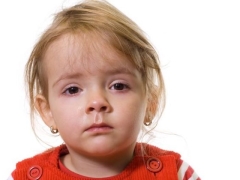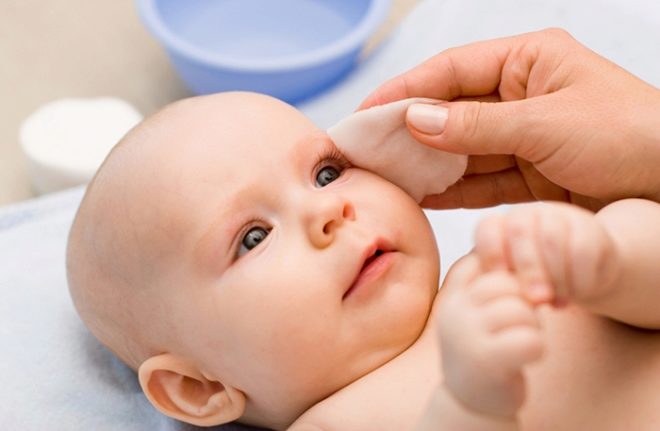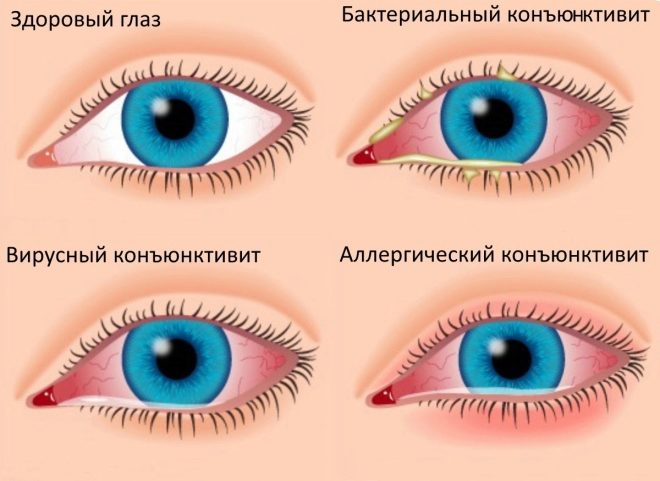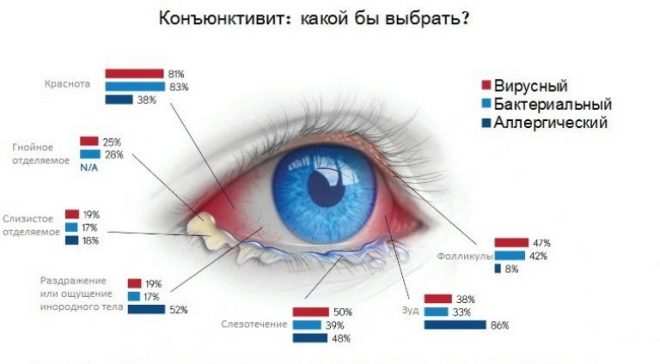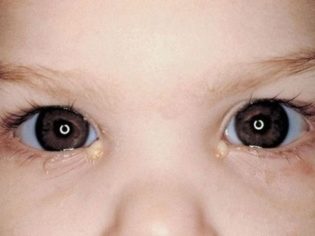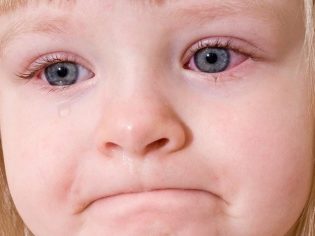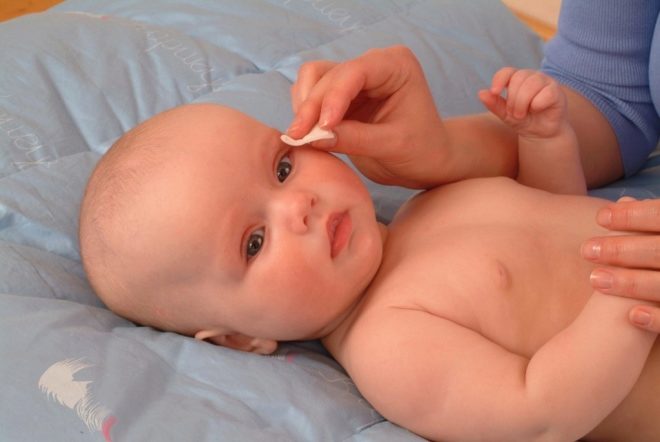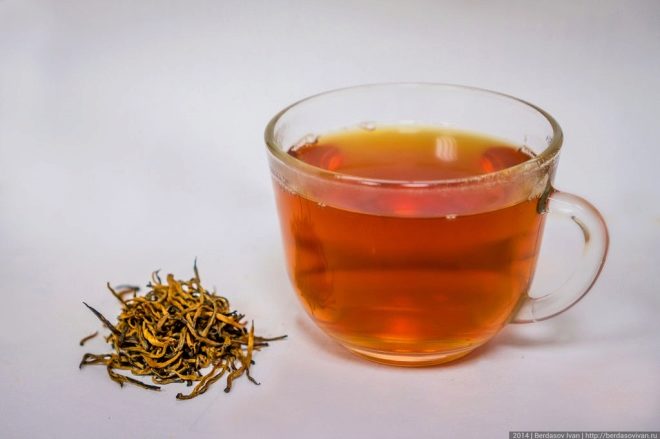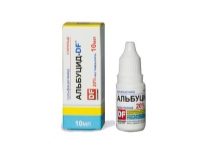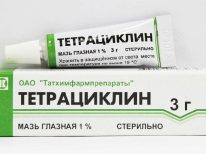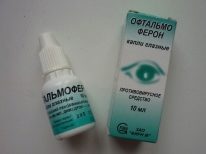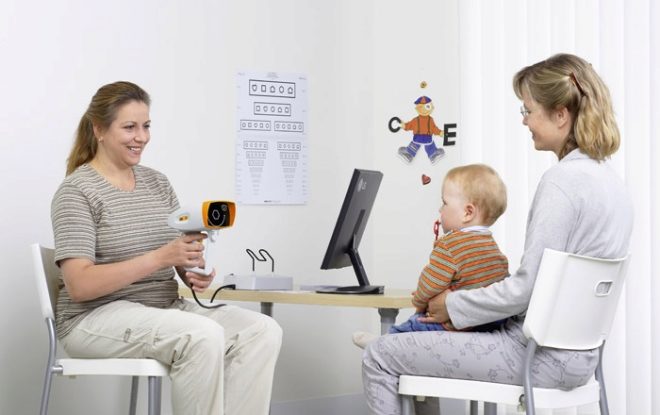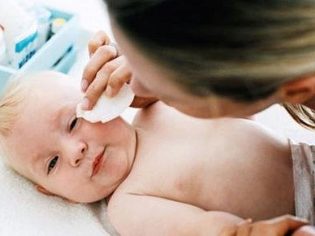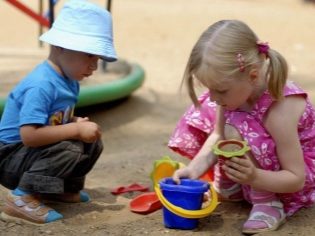How to treat conjunctivitis in a child 1-4 years?
Inflammatory eye diseases are most common in pediatric ophthalmic practice. Almost from the first days after birth, the baby can get sick with conjunctivitis. The inflammatory process in the small children of the first year of life is treated quite differently than in schoolchildren.
What causes the disease?
Inflammation of the conjunctiva in babies can be caused by various external factors. Currently, there are about hundreds of different causes that contribute to the development of this disease. The peak in the incidence of conjunctivitis occurs in the age of 2-10 years. However, even newborn babies may experience signs of this disease.
The most common causes of conjunctival inflammation in a child under 5 are:
Viruses. Possess relatively high resistance to adverse environmental conditions. Even with proper disinfecting treatment, they can remain viable for a long time. The susceptibility to viruses in newborn babies is very high. Infection occurs, as a rule, in utero or by airborne droplets.
Bacteria. These can be staphylococci or streptococci. At the weakened kids also mix-forms can occur. In this case, when determining the causative agents of infection, several types of bacteria can be detected at once. This variant of the disease is quite difficult with severe symptoms of intoxication.
Fungi. The most frequent culprit of the disease is Candida. In weakened and frequently ill children with a low level of immunity, the multiplication of fungi occurs fairly quickly. The reduced function of the immune system does not allow the body to cope with the fungal infection. One of its manifestations is conjunctivitis. In such cases, mandatory prescription of anti-candidal drugs is required.
Allergic manifestations. For children under the age of 1 year, such reactions to the addition of new foods to the diet are most frequent. With the introduction of complementary foods, the child may react with severe allergies. One of its manifestations is acute conjunctivitis. Also, children with an acute reaction to flowering have characteristic symptoms of the inflammatory process in the mucous membrane of the eye.
- Traumatic injuries. Relatively common in young children. Crumbs can touch the face with handles. Conjunctiva in young children is hypersensitive and quickly injured. Accidental damage also contributes to the development of conjunctivitis.
- Congenital forms. In such situations, infection occurs even in utero. If during pregnancy the expectant mother gets a viral or bacterial infection, then the baby can very easily become infected. Pathogens penetrate the placental barrier, causing infection and inflammation.
It is important to note that even with the effects of various provoking factors, not all babies can develop manifestations of conjunctivitis.
If a child has a strong immunity, then even when infected, the disease can occur in a relatively mild form. Premature babies and babies with congenital birth injuries are most susceptible to inflammatory processes and infections.
As manifested in children of different ages?
Conjunctivitis occurs in various forms. This largely depends on the age of the child and his physiological characteristics. The work of the immune system varies significantly in different age periods of the baby’s development. This gives an imprint on the severity of the clinical manifestations of the disease in children at different ages.
Newborns and children 1 year of age
The most characteristic symptoms at this age will be the following manifestations of the disease:
- Intoxication and fever. In severe cases, body temperature rises to 39 degrees. A child can shiver a lot. Toddlers usually refuse to breastfeed, become moody.
- Copious discharge from the eyes. Most often, lacrimation affects both eyes. Out of the eye often transparent. If the bacterial flora is involved in the inflammatory process, pus may even appear. In such cases, the use of antibiotics is required.
- Red eyes. The process is usually two-way. This symptom contributes to increased blinking. A small child wants to remove from the eye a foreign object that bothers him.
- Severe sleepiness. Kids want to sleep almost all day long. With severe pain in the daytime, the child may cry and ask for pens.
Children aged 2-4 years
Toddlers usually complain of severe tearing. Body temperature does not rise as high as in newborns. With moderate flow it is 38-38.5 degrees. If viruses become the source of infection, then the temperature rises to febrile numbers, as a rule, does not happen. Suppuration causes only pathogenic bacterial flora.
The most frequent manifestation is the painful perception of bright light. Bright rays of light falling on the irritated mucous membrane may cause additional damage to it. Little kids feel much better in a dark room with curtains curtained. Walking outside during bright sunlight brings discomfort and increased pain.
Treatment
Dr. Komarovsky believes that to conduct therapy conjunctivitis should be as early as possible. Already from the appearance of the first clinical signs of the disease, the appointment of special effective drugs is required. As many causes of conjunctivitis exist, so many different therapeutic methods are used to cope with this disease. It is important to note that the treatment of the disease should be carried out until complete recovery. This will help in the future to prevent recurrent conjunctivitis. All acute conjunctivitis is usually treated for at least 7-10 days. With bacterial forms of the disease - even up to two weeks.
All methods that are used in the treatment of diseases in children aged from birth to four years can be divided into the following groups:
Eye treatment
This method is one of the most important in the treatment of the inflammatory process. To eliminate the discharge from the eyes, you can use various decoctions of pharmaceutical plants or disinfectant solutions.
For infants, you can use chamomile decoction for the hygienic treatment of sore eyes.. To prepare this infusion, take one tablespoon of chopped raw materials and pour a glass of boiling water. Insist on for two hours. Strain the resulting broth through cheesecloth.
Treat your eyes every day at least 5-6 times a day. Start treatment from the outer edge of the eye, moving to the nose. All movements should be as smooth as possible without pressure. For each eye, use a clean cotton pad. Before carrying out any hygiene procedures, mom should thoroughly wash her hands with antibacterial soap and dry with a towel.
To treat the eyes, you can also use a weak tea infusion. This method can be used for kids older than a year.Try to choose tea without aromatic additives. Eye treatment can be done with lotions. To do this, moisten cotton pads in the tea infusion and put on the eyes. Hold for 5-7 minutes. This procedure should be repeated up to three to four times a day.
The use of drug therapy
For the treatment of bacterial forms conjunctivitis in children of the first years of life the drug is widely used "Albucid». These drops are well tolerated by babies. The drug has a fairly wide spectrum of action and has a detrimental effect on many types of staphylococci.
For babies aged 2–3 years, tetracycline ointments can be used. They are laid behind the eyelids with a special glass rod. This ointment is antibacterial. The appointment of any antibiotic is solved only by the attending physician. Usually the use of this drug is prescribed by a doctor for 6-7 days. This treatment is especially effective for suppuration or other signs of bacterial infection.
If conjunctivitis is caused by viruses, then the eye drops that have a virotoxic effect are discharged to the child. Among the most common and frequently used - "Ophthalmoferon». He copes with tearing and redness. The pediatrician chooses the duration, frequency and dosage.
Antifungal drugs are prescribed for fungal conjunctivitis.. Also in parallel prescribed immunostimulating drugs. Such treatment is usually shown weakened children with progressive candidal infection. Therapy is required, as a rule, long.
If conjunctivitis has arisen as a result of an eye injury, then in such cases, a pediatric ophthalmologist will recommend means to quickly restore the conjunctiva. Before prescribing the medicine, the doctor must necessarily conduct additional examinations on special devices. This is necessary to identify possible contraindications to the appointment of eye drops.
Prevention
Preventive measures will help prevent the development of conjunctivitis in your baby. Observance of simple and simple preventive measures will allow preserving the child’s eyesight and preventing possible inflammatory eye diseases.
For the prevention of conjunctivitis:
-
Be sure to perform hygienic treatment of the eyes of the child every day. Use only clean cotton pads for this. Wash and dry hands thoroughly before performing the procedure. Wash towels to treat your baby’s face every day. Be sure to iron the textile on both sides with a hot iron.
-
During epidemic outbreaks of infectious diseases, do not take the child to kindergarten. Compliance with the quarantine will protect your baby from infection. Be sure to ask your caregivers about the hygienic and sanitary condition of a preschool institution.
-
Strengthen immunity. Daily walks in the fresh air have a positive effect on the immune system of the child’s body. In the cold season, try not to wrap the baby. This will be a good hardening method for the fragile children's body.
-
Follow the rules of hygiene. The baby must have its own dishes and cutlery. Try to rinse them thoroughly with hot water after each use. For newborn babies, be sure to handle jars with boiling water. Chips and scratches on the children's dishes should not be! In such lesions, microbes very often settle, which can easily become a source of infection.
Almost every child can get sick with conjunctivitis. Mom should be sure to know the main manifestations of the disease and elementary methods that will allow to cope with the disease in a relatively short time.
How to treat conjunctivitis, see the transfer of Dr. Komarovsky.
